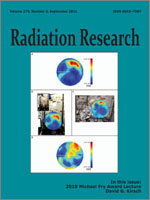A combined analysis of three case-control studies nested in three European uranium miner cohorts was performed to study the joint effects of radon exposure and smoking on lung cancer death risk. Occupational history and exposure data were available from the cohorts. Smoking information was reconstructed using self-administered questionnaires and occupational medical archives. Linear excess relative risk models adjusted for smoking were used to estimate the lung cancer risk associated with radon exposure. The study includes 1046 lung cancer cases and 2492 controls with detailed radon exposure data and smoking status. The ERR/WLM adjusted for smoking is equal to 0.008 (95% CI: 0.004–0.014). Time since exposure is shown to be a major modifier of the relationship between radon exposure and lung cancer risk. Fitting geometric mixture models yielded arguments in favor of a sub-multiplicative interaction between radon and smoking. This combined study is the largest case-control study to investigate the joint effects of radon and smoking on lung cancer risk among miners. The results confirm that the lung carcinogenic effect of radon persists even when smoking is adjusted for, with arguments in favor of a sub-multiplicative interaction between radon and smoking.
How to translate text using browser tools
29 June 2011
Radon, Smoking and Lung Cancer Risk: Results of a Joint Analysis of Three European Case-Control Studies Among Uranium Miners
Klervi Leuraud,
Maria Schnelzer,
Ladislav Tomasek,
Nezahat Hunter,
Margot Timarche,
Bernd Grosche,
Michaela Kreuzer,
Dominique Laurier
ACCESS THE FULL ARTICLE

Radiation Research
Vol. 176 • No. 3
September 2011
Vol. 176 • No. 3
September 2011




